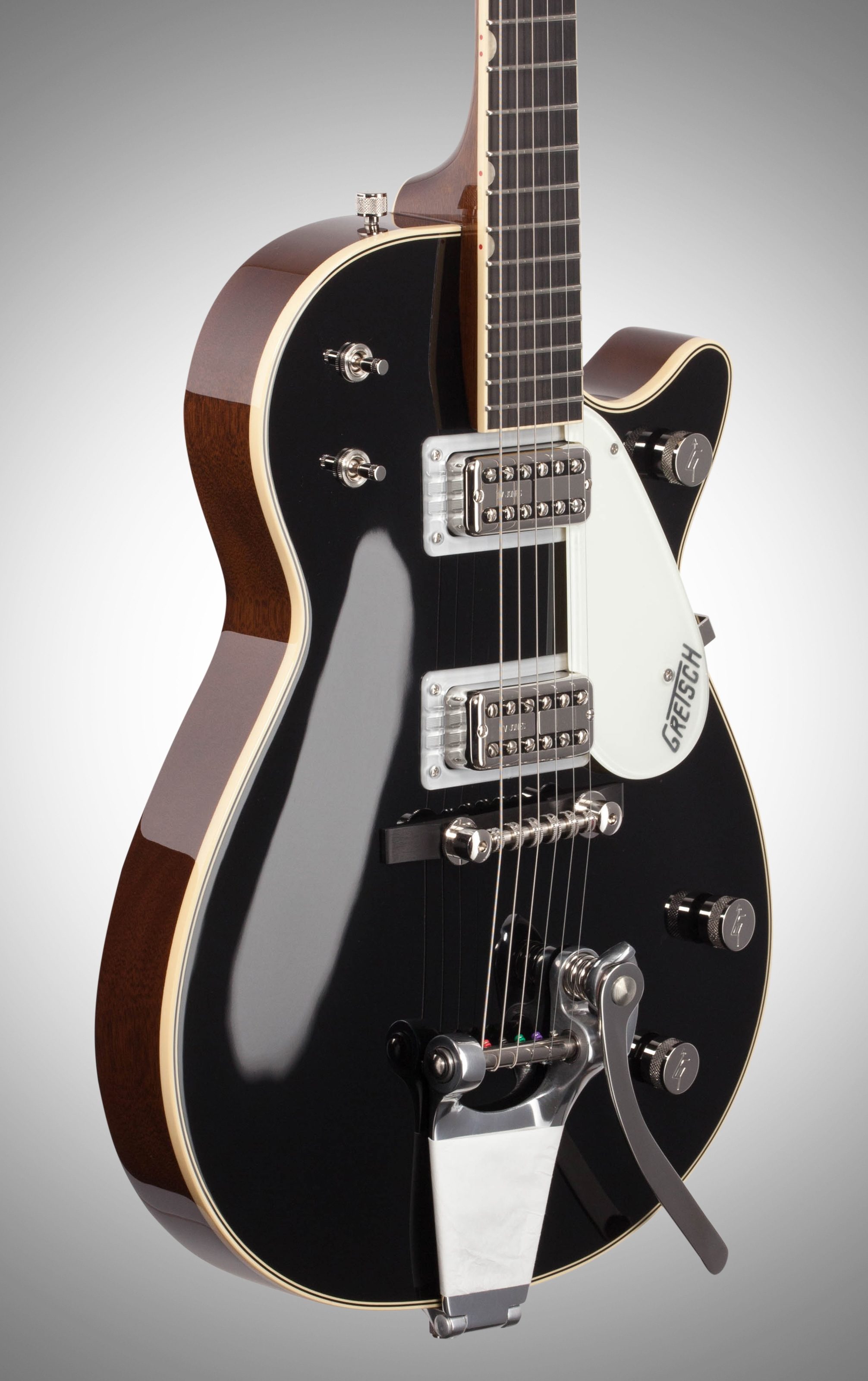Gretsch Serial Numbers Lookup
July 8, 2013By Morgan BrunnerEven if this headstock didn’t say “Made in Japan,” the “J” that begins the serial number indicates that it was.The serial number on your modern Gretsch guitar or bass contains specific information about where and when it was made. This allows you to accurately date a modern Gretsch guitar by its serial number.By modern, by the way, we mean since 2003, which is when Gretsch serial numbering took its current form. Various other serial numbering systems existed before then that stretch far back into Gretsch history—all the way back to the very earliest Gretsch guitars of the 1930s. We’ll cover those older serial numbering systems in another installment.As for the present, the modern system is quite simple. Gretsch serial numbers typically appear on the back of the headstock and begin with a two-letter prefix code indicating the country of origin and specific manufacturing facility, followed by numbers indicating year and month of manufacture and sequential order of manufacture.“JT” is most common among the several two-letter country/factory prefixes, signifying Japan (J) and its Terada (T) factory. Others are “CS” (U.S. Custom Shop), “CY” (China, Yako facility), “JD” (Japan, Dyna Gakki facility), “JF” (Japan, Fuji-Gen Gakki facility), “KP” (Korea, Peerless facility) and “KS” (Korea, Samick/SPG facility).After the two-letter prefix, two digits designate the year of manufacture; the next two designate the month of manufacture, and the remaining four digits designate the instrument’s sequential number among all models built that year.
Of those last four sequential-order digits, 0001 through 0100 designate prototype and one-off models, sample instruments and other special instruments; 0101 through 9999 designate all regular production models.For example then, a modern Gretsch serial number such as “JT07115922” would indicate that the instrument was built in Japan (J) at the Terada factory (T); that it was built in 2007 (07) in November (11); and that it was the 5,922 nd production-model instrument made that year. Similarly, “JT12030040” would indicate a non-regular-production instrument built in March 2012 at the Terada factory in Japan, and that it was the 40 th among the special-run instruments made that year.
Bacon Banjo Company Serial Numbers A Summary of Bacon Serial Numbers by Ed BrittCopyright © 2003 All rights reserved.(From my forthcoming, yet-to-be written, magnum-opus - David L. Day, and the Transitional Bacon Banjos)Editor's note: There was never a 'Bacon & Day Company' nor for that matter a 'B & D Banjo Company.' It was always called the Fred Bacon Manufacturing Company, or the Bacon Banjo Company, or some variant thereof.
The 'D' of 'B&D' was in fact David L. Day, but his name was never part of the company name.
While the bulk of the information contained here is from Ed Britt, I have added a few things, and responsibility for errors is mine. MIHThe 'Bacon' and the 'B&D' models were numbered consecutively - from Bacon's start in 1906 (#1) to it's sale to Gretsch in 1939/40 (approx. #35,xxx).1906 - 1920 The early Bacon banjos, made from 1906 to 1920 were produced for Fred Bacon by several makers, including: Fairbanks-Vega, Wm Lange (Orpheum), and Fred's own workshop - in Forrest Dale, Vt.1913 Earliest reference to Forrest Dale, VT address in catalog.
Gretsch Serial Numbers Lookup And Movement
Actual maker at that time is still unknown, although later banjos were probably made or assembled there.1920 - 1940 Serial numbers were at approximately #5xxx - when the Groton, Connecticut works were started in April, 1920.1920 Bacon announced 2 arched top, carved mandolins.1922 David L. Day left Vega and joined the Bacon Banjo Company.1923 Serial numbers were approximately #9xxx - when the Silver Bell was introduced.1930 appear stating 'available in March.' 1931 Serial numbers were approximately #29,xxx - when the 'new generation' Symphonie, Sultana, and Senorita were introduced.1938 Serial numbers were approximately #35,xxx - when the famous Hurricane of 1938 (Sept), closed the Groton works.1938 - 1940 At first, The Bacon Company contracted with Gretsch to produce banjos for them.
There are some transitional instruments made by Gretsch - from late 1938 to early 1940 (probably from existing stock) - which carry Bacon serial numbers, and Bacon stamps.1940 Gretsch purchased the Bacon Banjo Company in early 1940.1940 - 1965 Sometime around 1939 -1940, Gretsch apparently restarted their OWN serial numbers at #1 - on guitars, at least. It's unclear whether the Bacon/B&D banjos were included in this renumbering scheme, at this particular time.1939/40 - 1965 From 1939/40 (#1 - or #001?) to 1965 (approx. #84xxx) Gretsch supposedly numbered all guitars consecutively. My observations suggest that at some point - in the early 1940's - the Bacon banjos also began to conformed to this scheme.1950s/60s During the 'Folk Boom', Gretsch produced a line of 5 string, open back banjos with both regular and extra-long necks. These all had black plastic laminate peghead overlays with 'Bacon' in outlined, block letters and a small, metal plate engraved tacked below it. These appear to have their own serial numberig scheme.1964/65 - 1970 From around 1964/65 to 1972, Gretsch used a different serial format showing, Month/Year/Production Number (3-4 digits), stamped as follows:MYNNN or MYNNNN - (Month = 1-9 - with 3 or 4-digit production number)MMYNNN or MMYNNNN - (Month =10,11,12 - with 3 or 4-digit production number)(It's unclear whether the 3-4 digit 'production number' is the total production for the Month - or for the Year.). # 31197 would have been made: March, 1971 #197.

BUT. #121197 could be made in either: Dec, 1971 #197 - OR: Jan, 1972 #1197 1966-67 Gretsch stopped active production of Bacon and B&D banjos, around 1966-67 when Baldwin (Gretsch's parent company, at that time) bought the ODE Company.